Mie traditions: Young artisans keep the flame burning
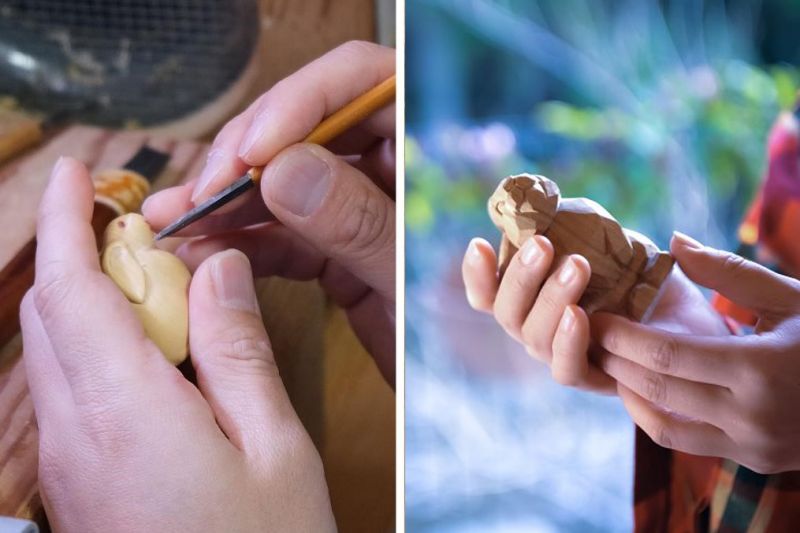
A group of young artisans are at work in Mie. They are studying traditional techniques to share the beauty of Mie's many traditional arts with the world, and ensure that the creative spark of culture is never extinguished. The group’s name is “Tokowaka,” meaning Forever Young. We had the pleasure to interview two active members of the group, one who specializes in Ise Netsuke, and another specializes in Ise Ittobori.
Written by Ren Wong
▼ Check here for information on Tokowaka
https://tokowaka.jimdofree.com/
Ise Netsuke craftsperson: Daishin Yokoyama
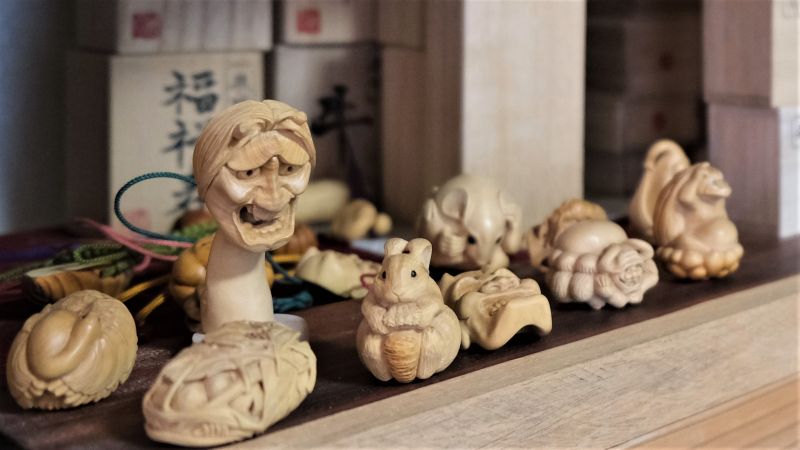
Netsuke are a bit like the strap decorations you might see dangling from the handbags of young women, or attached to cellphones. A long time ago, people wore kimonos with no pockets, so people attached netsuke to the end of strings and fastened these to pouches for tobacco or other small items. The pouches were carried this way hanging from the obi (kimono sash). There are countless designs and many collectors.
“Ise Netsuke” flourished as souvenirs for travelers who came to Ise on pilgrimage in the Edo period (17C-19C). Customarily, they are made of wood of tsuge (boxwood) from Mt. Asama behind Ise Jingu, but this has become so precious that these days materials are also sourced from outside the prefecture.
Daishin Yokoyama is not only an artisan, but also an active chief priest of a Buddhist temple. Every day he refines his skills in a studio behind the temple. Mr. Yokoyama first encountered Ise Netsuke around the time he completed his monastic training. Coming across the intricate artworks at a local exhibition, it was love at first sight. Right then and there he asked the master to let him become his apprentice. “Practicality and the beauty of artistic technique come together. The world view expressed in all of these tiny works resonated with me,” said Yokoyama-san.
“Ise Netsuke” flourished as souvenirs for travelers who came to Ise on pilgrimage in the Edo period (17C-19C). Customarily, they are made of wood of tsuge (boxwood) from Mt. Asama behind Ise Jingu, but this has become so precious that these days materials are also sourced from outside the prefecture.
Daishin Yokoyama is not only an artisan, but also an active chief priest of a Buddhist temple. Every day he refines his skills in a studio behind the temple. Mr. Yokoyama first encountered Ise Netsuke around the time he completed his monastic training. Coming across the intricate artworks at a local exhibition, it was love at first sight. Right then and there he asked the master to let him become his apprentice. “Practicality and the beauty of artistic technique come together. The world view expressed in all of these tiny works resonated with me,” said Yokoyama-san.
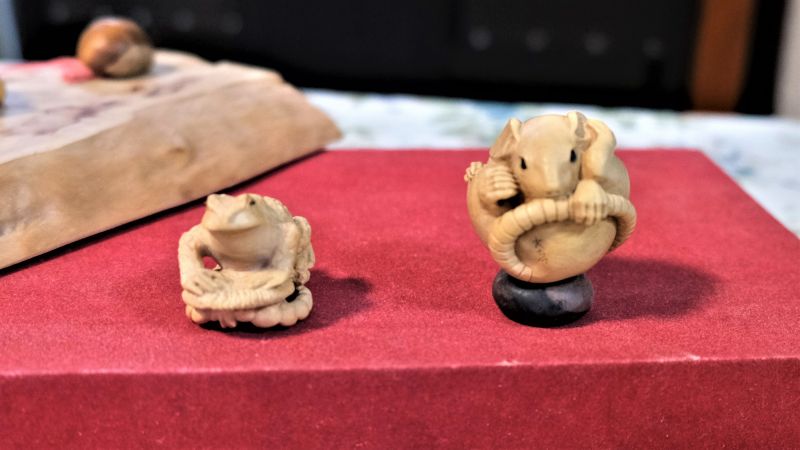
Basically, anything can serve as the subject of Ise Netsuke, but the most classic design handed down since olden times has been the “marunezumi,” or “round mouse.” “The circular shape is most prevalent. It fits best in the palm of your hand, and the strength of the shape makes it a practical choice,” said Yokoyama-san. The next most popular is the “frog” which, in Japanese, has the same pronunciation as the word “return”: kaeru. This double meaning imbued the motif with the hope that traveling pilgrims to Ise would return home safely. Sentiments of good luck or prayers characterize many of the themes that inspire Ise Netsuke.
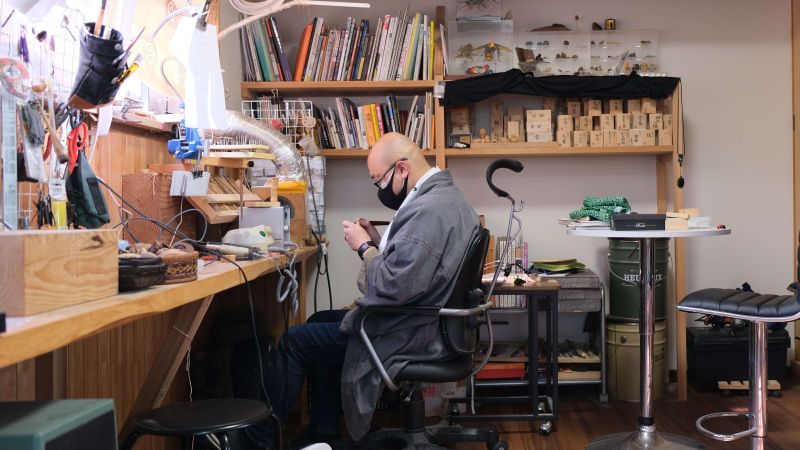
Yokoyama-san often finds inspiration in things he sees in daily life. In the corners of his studio, there were many things he had picked up, such as stones, fallen leaves, and cast-off cicada shells.
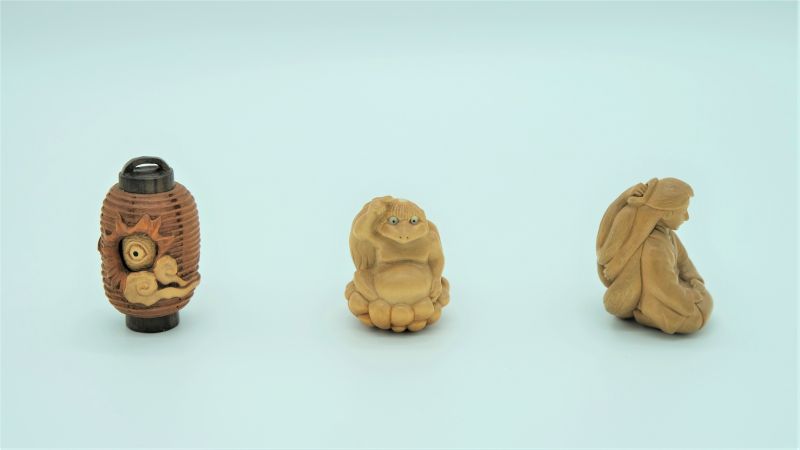
Japanese monster-like spirits known as yokai are also one of his favorite motifs. As he explains, “each yokai has its own story. I want to create something that gets people to imagine this other world.” He seeks designs that have utility and strength, but that will also fascinate anyone who sees them.
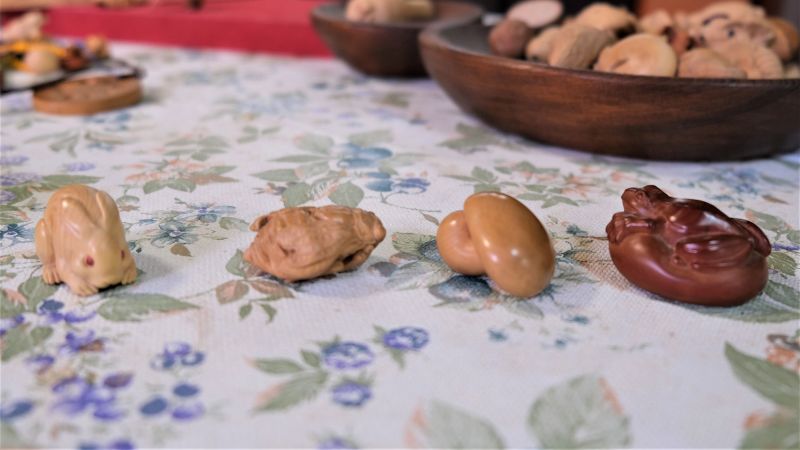
A beautiful quality of Ise Netsuke is the unique luster and hue that emerges with continued use, a distinct characteristic of the nature of tsuge (boxwood). “Even after carving is completed, the work is reborn just from being held in your hand,” he told us. “Its durability means that even 100-year-old figures can still be enjoyed today, a story handed down from parents to children, etched in art.” A completely different character may emerge even from the same design depending on who holds it and how long it has been used. Truly, a one-of-a-kind treasure in the world! “What a wonderful thing it is!” I thought, and started to think about which design I would like for myself.
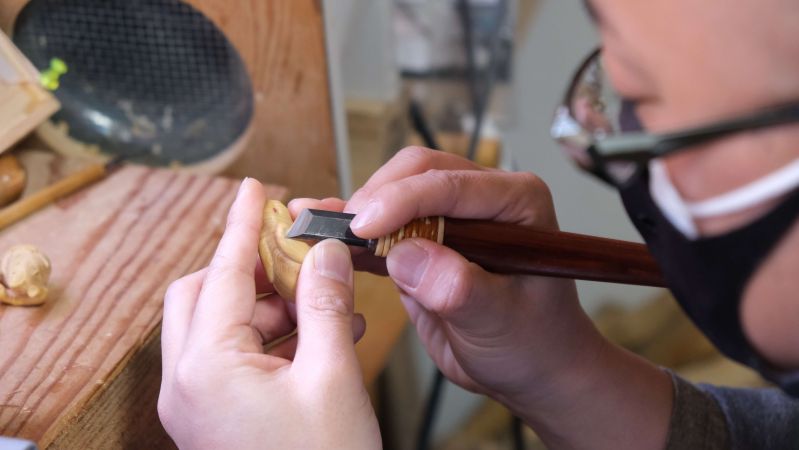
“Nowadays, even in my hometown, many people don’t know what Ise Netsuke is,” Yokoyama-san says. “I’d just like people to get acquainted with it and enjoy them.” His activities in the Tokowaka group gives him new ideas and hints from other creators. Recently, he shares this inspiration by appearing in lectures and events.
This art form that can be enjoyed in the palm of your hand is also useful, and a wonder to watch evolve over time. Suddenly, I found myself raptly fascinated with Ise Netsuke, an small art form chock-full of the beauty of Japan.
This art form that can be enjoyed in the palm of your hand is also useful, and a wonder to watch evolve over time. Suddenly, I found myself raptly fascinated with Ise Netsuke, an small art form chock-full of the beauty of Japan.
Ise Ittobori craftsperson: Yui Ota
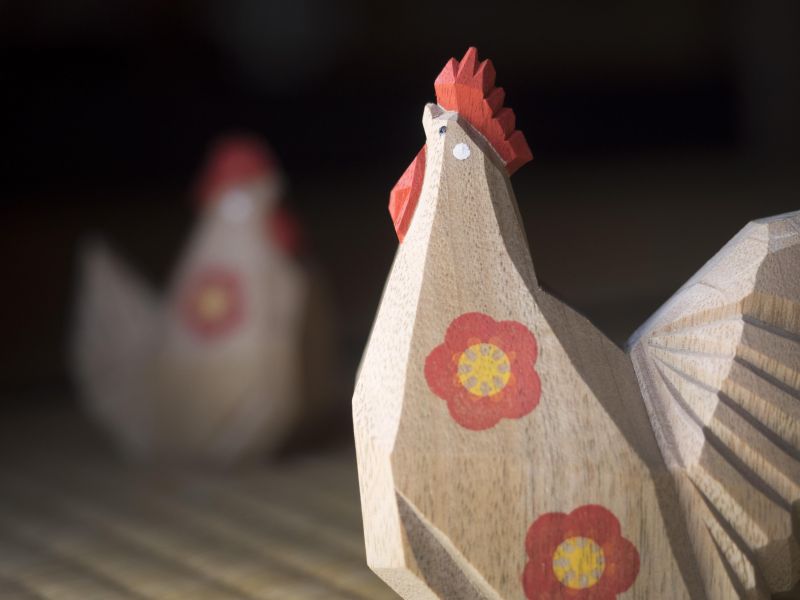
Ise Ittobori is an art form said to have started when shrine carpenters at Ise Jingu carved lucky charms from scrapwood. This type of work is characterized by rough, bold shapes carved with a large blade in a “itto-ryodan (single-cut)” fashion, left unfinished as they are. The main material used is from kusu (camphor trees), and Ise Ittobori is adored for bringing out the simple, warm fragrant qualities of the wood. The figurines feature prominently in Japan as “Eto Mamori,” a kind of amulet related to the Asian 12-year animal zodiac, distributed widely around New Year’s at shrines all over Japan.
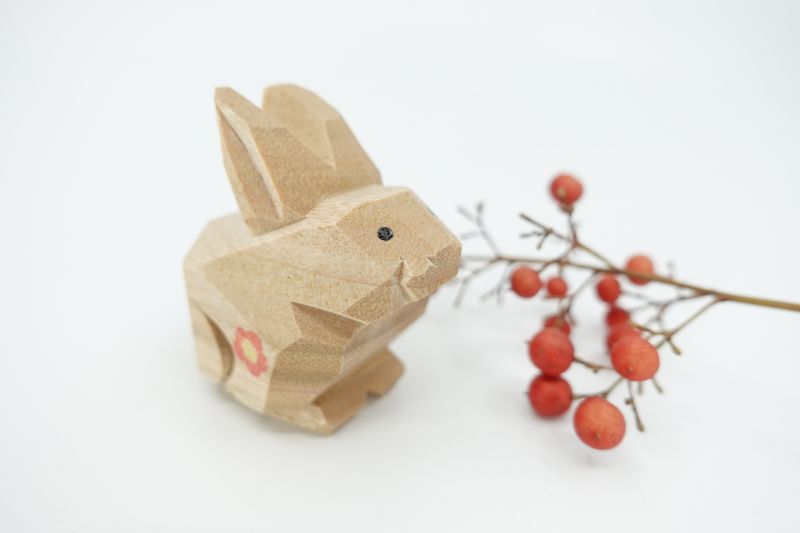
Yui Ota approaches her work as an artisan with great vigor while also being a mother. Born in Ise, the Eto Mamori of Ise Jingu has been close to her heart since she was a child. At university, she studied wood carving, and her search for work in the field brought her into contact with artisans of Eto Mamori, where she finally met her current teacher. “When I met my master,” she said, “I didn't think I would become a craftsperson. I didn’t even know about Ise Ittobori.”
She says that she only decided to become an artisan when she was in her 2nd year as an apprentice. “The senior apprentice quit, leaving only me. While learning about the attractive points of Ise Ittobori, I also realized that there was a shortage of successors… If I continued half-heartedly, I felt this art form might disappear. So I made up my mind to approach this work wholeheartedly,” she told us.
She says that she only decided to become an artisan when she was in her 2nd year as an apprentice. “The senior apprentice quit, leaving only me. While learning about the attractive points of Ise Ittobori, I also realized that there was a shortage of successors… If I continued half-heartedly, I felt this art form might disappear. So I made up my mind to approach this work wholeheartedly,” she told us.
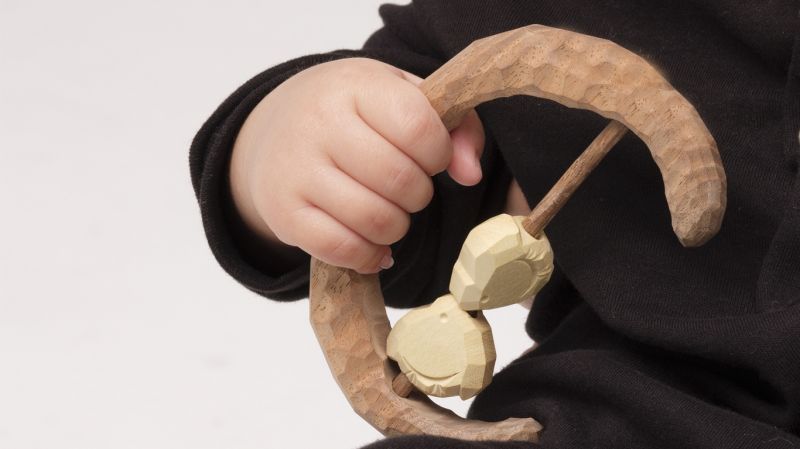
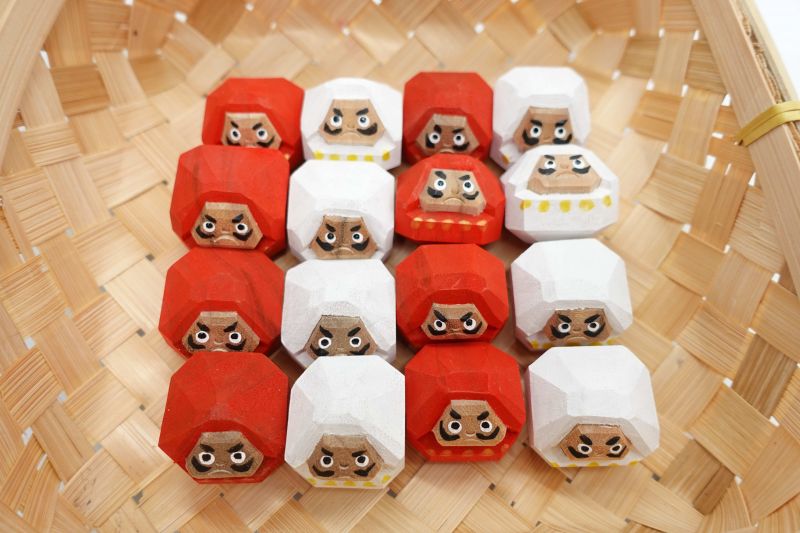
As an Ise Ittobori craftsperson, carving the next year‘s Eto Mamori takes up most of her year. On top of that, Ms. Ota also creates original works. Her vision is “Ittobori that makes people feel at ease just by being nearby.” “I want to create Ittobori works that enrich people’s lives,” she said. She is also exploring other possibilities of Ittobori by making accessories and children’s toys. “Daruma” is one of Yui’s most popular series, using the lucky charms as motifs. Of course, all Ise Ittobori are lucky!
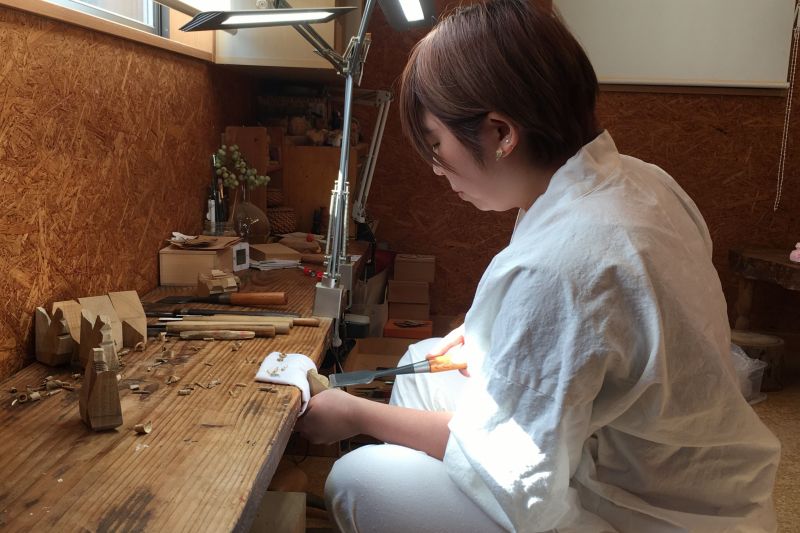
She also showed us how she works. In an instant, the calm, relaxed lady suddenly changed completely as her gaze sharpened and she struck a piece of wood with a large blade. The studio also had many big machines, and it was apparent that making Ittobori was a strenuous endeavor. There are times, Ota-san notes, when it is challenging for a woman to do some things.
In times of difficulty, she has found support in the group Tokowaka. “The world of an artisan is solitary, so being able to talk with other craftspeople has helped a lot.” she said, “I’m happy to have such friends.” Some exhibitions and studios can only be arranged by a group of young people, and the range of her work has expanded through the association.
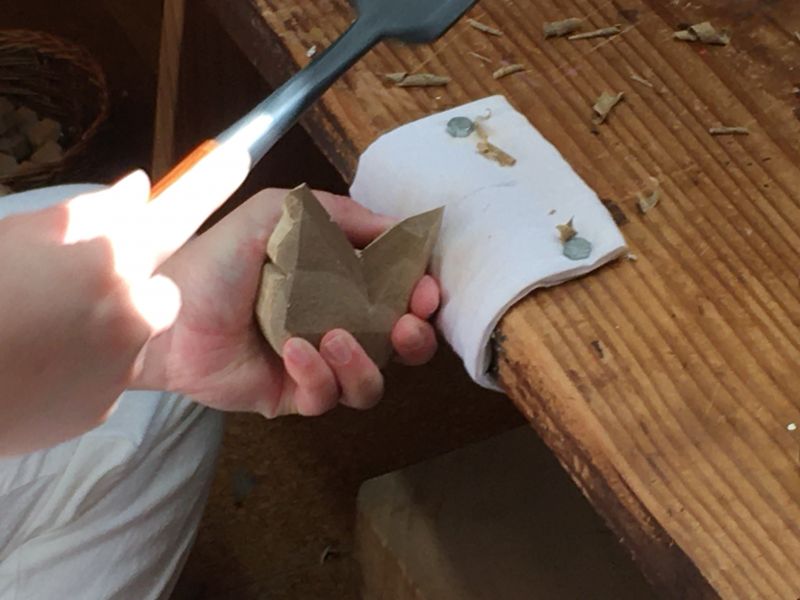
“It brings me great happiness if people come to like Japanese culture and the Ise region through Ise Ittobori." The saying “itto ryodan” means to cut something in two with a single strike of a blade, and is a symbol of decisiveness. “I believe this style of work is tied to the spirit of Japan,” she said. “I hope people feel this.”
The value of Mie’s traditional crafts lies not only in being beautiful or rare, but also in conveying a deeper sense of Japan. Bring them into your daily life and add meaning to every moment.
The value of Mie’s traditional crafts lies not only in being beautiful or rare, but also in conveying a deeper sense of Japan. Bring them into your daily life and add meaning to every moment.